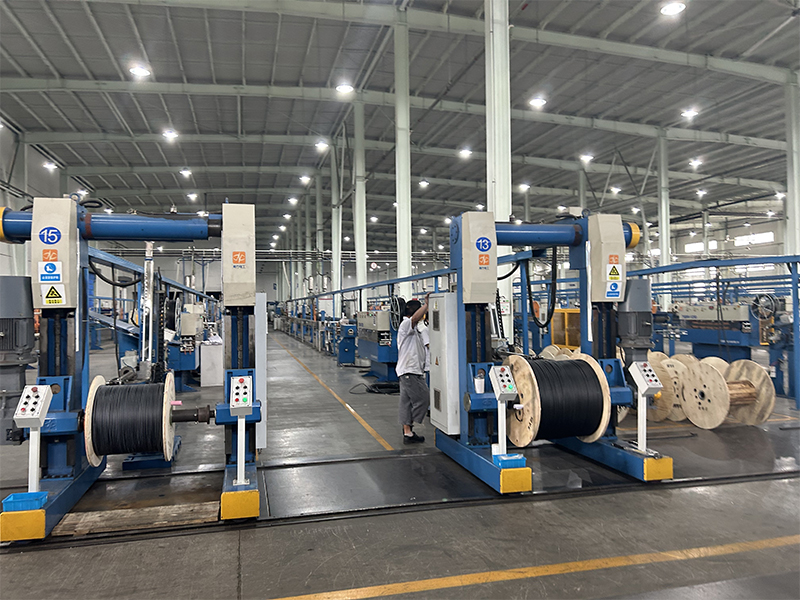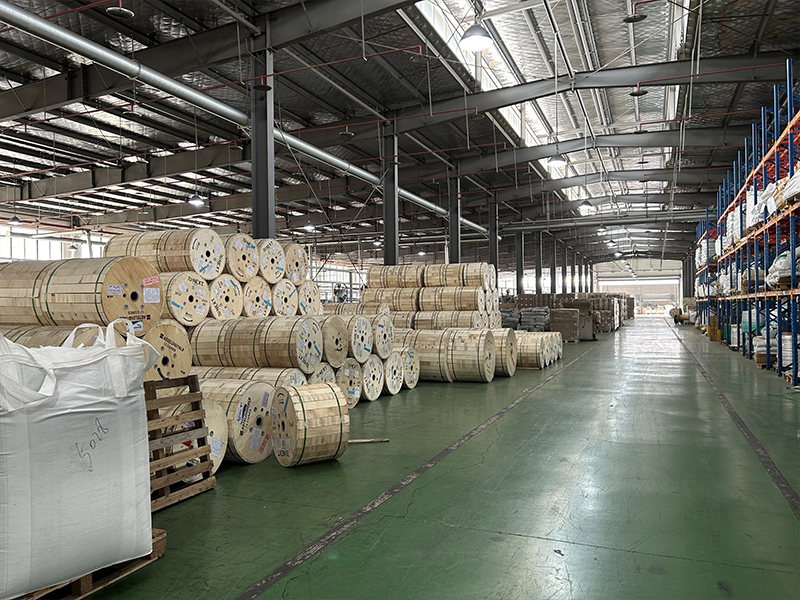With the rapid development of optical communications, optical fiber cables have begun to become the mainstream products of communications. There are many manufacturers of optical cables in China, and the quality of optical cables is also uneven. Therefore, our quality requirements for optical cables are getting higher and higher. So when purchasing optical cables How should we check before and after? Here is a brief introduction from GL FIBER Manufacturer:
1. Check the manufacturer’s qualifications and corporate background.
It mainly depends on whether it is a big manufacturer or brand, whether it is committed to the R&D and production of optical cable products, whether there are many successful cases, whether it has ISO9001 quality system certification, ISO4OO1 international environmental system certification, whether it complies with the ROHS directive, and whether it has certification from relevant domestic and international institutions. Certification. Such as Ministry of Information Industry, Tel, UL and other certifications.
2. Check the product packaging.
The standard length of optical fiber cable supply is generally 1km, 2km, 3km, 4km and customized length specifications. Positive and negative deviations are allowed. The deviation range can refer to the manufacturer's factory standards. Check the outer sheath of the optical cable to see if it has obvious signs such as meter number, manufacturer name, optical cable type, etc. Generally speaking, the factory optical cable is wound on a solid wooden reel and protected by a wooden sealing board. Both ends of the optical cable are sealed. The optical cable reel has the following marks: product name, specification, reel number, length, net/gross weight, date, A/ B-end mark, etc.; check the optical cable test record. Normally there are two copies. One is on the inside of the wooden tray with the cable tray. You can see the optical cable when you open the wooden tray, and the other is fixed on the outside of the wooden tray.
3. Check the outer sheath of the optical cable.
The outer sheath of indoor optical cables is generally made of polyethylene, flame-retardant polyethylene, or low-smoke halogen-free materials. The high-quality ones have a smooth and shiny appearance and a good feel. It has good flexibility and is easy to peel off. The outer sheath of poor-quality optical cables has a poor finish. When peeled off, the outer sheath is easy to adhere to the tight sleeve and aramid fiber inside. Also note that some products use sponge instead of aramid fiber material. The PE sheath of the outdoor ADSS optical cable should be made of high-quality black polyethylene. After the cable is formed, the outer sheath should be smooth, bright, uniform in thickness, and free of small bubbles. The outer sheath of poor-quality optical cables has a poor feel and is not smooth, and some printing is easily scratched. Due to raw materials, the outer sheath of some optical cables is poorly dense and moisture easily penetrates.
4. Check the steel wire for reinforcement.
Many structures of outdoor optical cables generally contain reinforcing steel wires. According to technical requirements and production requirements, the steel wires in outdoor optical cables must be phosphated, and the surface will be gray. After being cabled, there will be no increase in hydrogen loss, no rust, and high strength. However, some optical cables are replaced by iron wire or even aluminum wire. The metal surface is white and has poor bending resistance. In addition, you can also use some simple methods to identify, such as soaking the optical cable in water for a day, taking it out for comparison, and the original shape will be revealed immediately. As the saying goes: Real gold is not afraid of fire. I would like to say here that "phosphorus steel is not afraid of water."
5. Check the longitudinally wrapped steel armored strips.
Regular manufacturers generally use longitudinally wrapped steel strips coated with anti-rust paint on both sides, and have good circumferential joints, which are relatively strong and rigorous. However, we also found that some optical cables on the market use ordinary iron sheets as armor strips, usually only one side is treated for rust prevention, and the thickness of the longitudinal banding steel strips is obviously inconsistent.
6. Check the loose tube.
Regular manufacturers generally use PBT materials to make loose tubes for housing optical fiber cores. This material is characterized by high strength, no deformation, and anti-aging. Some products use PVC material as loose tube. The disadvantage of this material is that it has poor strength, can be pinched flat, and is easy to age. Especially for some optical cables with GYXTW structure, when the outer sheath of the optical cable is peeled off with a cable opener and pulled hard, the loose tube made of PVC material will deform, and some will even fall off along with the armor. What's more, the optical fiber core will also be pulled together. Break.
7. Check the fiber cream.
The fiber paste in the outdoor optical cable is filled inside the loose tube to prevent water from directly contacting the optical fiber core. You must know that once water vapor and moisture enter, it will seriously affect the life of the optical fiber. Relevant national regulations have specific requirements for water blocking of optical cables. In order to reduce costs, some optical cables use less cable paste. So be sure to check whether the fiber cream is full.
8. Check out aramid.
Aramid, also known as armored fiber, is a high-strength chemical fiber that can effectively resist external forces and provide good protection. Currently, there are only a few companies in the world that can produce such products, and they are expensive. Many major manufacturers of ADSS optical cables use aramid yarn as reinforcement. Of course, the cost of aramid is relatively high, so some ADSS optical cables will make the outer diameter of the cable very thin to reduce the use of aramid, or simply use domestically produced ones. Sponge instead of aramid. The appearance of this product is very similar to aramid, so some people call it "domestic aramid". However, the fire protection grade and tensile performance of this product do not meet the technical specifications of regular aramid fiber. Therefore, the tensile strength of this type of optical cable is a challenge during pipe construction. "Domestic aramid" has poor flame retardancy and melts when exposed to fire, but regular aramid is a flame retardant product with high toughness.
9. Check the fiber core.
The optical fiber core is the core part of the entire optical cable, and the points discussed above are all to protect this core of transmission. At the same time, it is also the most difficult part to identify without the aid of instruments. You can't tell whether it's single-mode or multi-mode with your eyes; you can't tell whether it's 50/125 or 62.5/125; you can't tell whether it's OM1, OM2, OM3 or zero water peak, let alone Gigabit or 10,000. Mega applied. It is best to recommend that you use high-quality fiber cores from regular large optical cable manufacturers. To be honest, some small factories cannot conduct strict inspection of optical fiber cores due to their lack of necessary testing equipment. As a user, you don’t have to take this risk to buy. Common problems often encountered in construction applications, such as insufficient bandwidth, inability to obtain calibration values for transmission distance, uneven thickness, difficulty in connecting well during splicing, lack of flexibility of optical fibers, and easy breakage during coiling, are related to the quality of the optical fiber core.
The above mentioned basic means and methods for identifying optical cable products are based on experience. In short, I hope that the majority of users of optical cable products can correctly understand optical fiber and cable products. GL FIBER focuses on the research and development and sales of optical communication products. Our main optical cable models are OPGW, ADSS, ASU, FTTH Drop cable and other series outdoor & indoor fiber optic cables. They are of national standard quality and sold directly by manufacturers. If you have needs for optical cable products, If you need to know the price of optical cable, you can contact us at any time.



